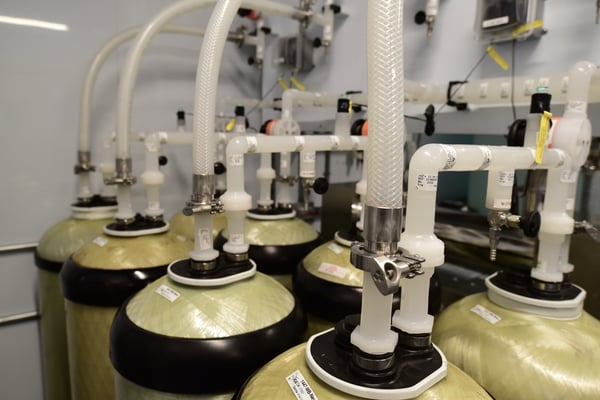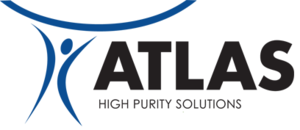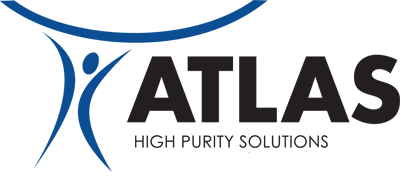Atlas High Purity Solutions provides a summary explanation of DI water
There’s nothing mystical about deionized (DI) water. DI water is simply pure water – without the ions that are found in most natural water supplies. Ions occur in water naturally, when mineral salts dissolve to form these charged particles that include calcium (Ca), iron (Fe), silica (SiO2), chlorides (Cl), and many others. Deionized Water, or DI Water, is created through the process of deionization, when these particles are removed in an ion-exchange process using mixed resin beds. Ion exchange has been around for a long time, dating even to the desalting of brackish waters in biblical times. Today, many commercial applications rely on deionized water for the production of goods such as pharmaceuticals, biotech products, medical devices, electronics, and foods, just to name a few.
Demystifying Deionized Water: How Does It Work?
Natural water contains both positively charged ions, called cations, and negatively charged ions, called anions. In deionization, water flows through ion exchange resins that remove the cations and anions, resulting in DI water. It is important to note that deionization is not a filtration technology, but rather an ion exchange process that creates H2O.
Ion exchange resins work like magnets, except they are small plastic beads. Each bead has organic polymer chains with charged functional groups. With its negative functional group, cation resin attracts positively charged cations, exchanging them for hydrogen (H). Conversely, anion resin has a positive functional group that attracts negatively charged anions and exchanges them for hydroxyl (OH). When cation resin and anion resin release their respective hydrogen (H) and hydroxyl (OH), the result is H2O.
Regeneration: When Good Resin Beads Go Bad
During the deionization process, exchange sites on resin beads eventually become exhausted and lose their capacity to exchange hydroxides or hydroxyls for cations and anions. However, the resins can be regenerated to a percentage of their original (virgin resin) capacities. To regenerate cation resins, positively charged Hydrochloric Acid (HCl) is added, which bonds with cation resin beads. Likewise, anion resins are regenerated with sodium hydroxide (NaOH) where the negatively charged Hydroxyl (OH) bonds with the anion resin heads.
Dual Beds and Mixed Beds
To generate deionized water, you need at least two types of ion exchange resins, one to remove positively charged ions and the other to remove the negatively charged ions. While some deionization processes rely on two separate beds – one with cation resins and the other with anion resins, these dual bed systems (often referred to as two column deionizer - common for low pressure boiler feed applications) produce lower quality water than mixed bed systems as some cations from the ion exchange process in the first column (cation) will "slip" past the anion column in the second step. This "slippage" will lower the resulting resistivity in the second column. As a result, mixed bed systems are much more common where high resistivity is required.
Mixed bed systems contain cation and anion resin in a single vessel (both strong acid cation resin and strong base anion resin) to form a single bed. This is the most common resin used for Service Deionization (SDI) or Portable Exchange Deionization (PEDI). Mixed bed deionization used as a polishing technology on a properly designed high purity water system is the most reliable way to consistently generate high resistivity water (16 megohms or greater). Larger systems requiring high resistivity water are often designed with reverse osmosis (RO) in advance of deionization (DI) in order to maximize DI resin longevity.
DI water is critical in many commercial applications and the quality of your deionization process, along with its ability to meet stringent compliance specifications, is increasingly important as the need for DI water grows. As New England’s largest independent high purity water RODI system and service provider, Atlas High Purity Solutions is dedicated to all of your high purity water needs and stands ready to design a solution that is right for you. We operate two deionization regeneration plants at our facilities located in Boston and New Hampshire.
 __
__
Atlas High Purity Solutions has been designing, installing, and servicing high purity water systems for more than thirty years, and is the leading provider of reverse osmosis and DI water solutions in the northeast United States.
__
Interested in learning about the basics of designing high purity water systems? Click below to download our guide, The 5 Critical Questions to ask when designing High Purity Water Systems.




